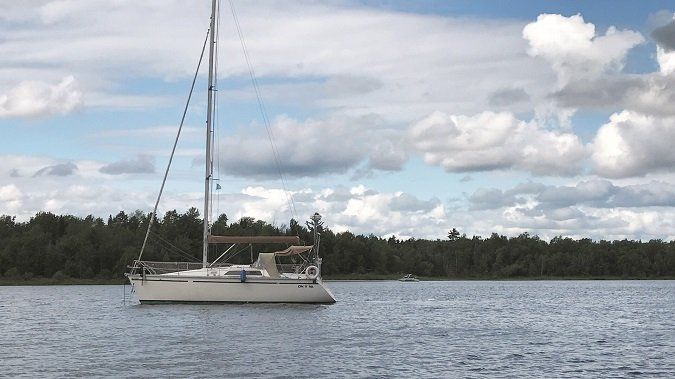OIL FILTER DESIGN FAUX PAS
With regards to your recent marine oil filter tests (see PS July 2019, Marine Oil Filter Comparison Test), having spent my career in the aeronautical engine technical field specializing in maintenance I must state my allegiance to non-encapsulated filters and independent housings. This trend towards spin-on filter assemblies prevents in my opinion the most important aspect of filter maintenance which is particle inspection. Filters are not removed so you can inspect or replace them, they are removed so you can ascertain your engines condition. This practice seems to have been set aside to make way to quick and easy maintenance using spin-on filters. Oil analysis is fine but it should start with a simple sediment inspection after a low cost electro- sonic cleaning in a 60 Hz bath (jewelry cleaner bath).
Andre Fortin
Hunter 30-2
Quebec, Canada
AFTER MARKET FILTERS
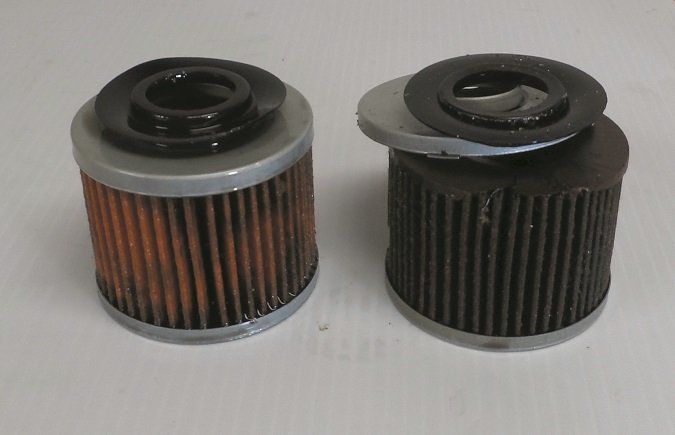
I run a Volvo-Penta diesel. Im hoping to substitute the OEM filter with a NAPA part. My thinking is that Volvo doesn’t manufacture its filters (nor its coolants, and etc.), but rather has them made for them and then labels and sells them, at a premium mark-up. Please commence to poke holes in my theory, if not in my filter.
David Shepherd
Sea Sport Explorer 2400
Avondale, RI
We have no problem with good aftermarket filters. Our oil filter test should be valid for your situation. NAPA Gold was a recommended brand/model (see PS July 2019, Marine Oil Filter Comparison Test).
STORAGE BAGS FOR CLEAR PLASTIC
With regards to your recent article on Plastic Windows (see PS March 2009, Whats the Best Way to Restore Clear Plastic Windows) weve developed a product to protect clear vinyl curtains when not in use. Clearstow boat curtain storage bag can be used for any boat with clear vinyl curtains.
Dave Love
Johns Canvas, Beaufort NC
An upcoming issue will look at various storage options for clear vinyl.
CATALINA 22 REVIEW
To add to your review of the Catalina 22 (see www.practical-sailor.com/reviews/boatreview/Catalina_22-1147-1.html). Our second boat was a Catalina 22, and served our young family well in our early cruising days. Tight quarters, yes, but weekend adequate for the four of us. I always felt safe in the boat, and trusted the simple yet sturdy rig. We progressed to two more Catalinas, the last a venerable 36 – one of the best boats on the water. I agree that new buyers should think twice about the need for a trailer. Set up/take down lose their charm quickly, and youre more likely to use the boat from a slip. To close, the name on a Catalina 22 at our marina says it all: Perfectly Adequate.
Chuck Rushing
MV Quest, Legacy 40
Solomons, MD
STOP BASHING C-30 HULL-DECK JOINT
Its time to get over your criticism of the hull-to-deck joint of the Catalina 30, your idea of acceptable construction is nothing more than that – an idea. Ive owned a Catalina 30 for over 40 years, sailed it off shore from San Francisco to Cabo San Lucas and back, banged it into buoys and other boats during intense races, and never had any issues with the joint. The same goes for numerous other Catalina 30 owners Ive known throughout the years. The longevity of the Catalina 30 speaks for itself. Certainly its not perfect, but if youre going to criticize a construction flaw, back it up with data not with an idea.
Scotty Fraser
Via PS Online
With so many variables in hull-deck design and construction materials (laminate thickness, type of sealant, distance between through-bolts, joint surface area, etc.), broad statements regarding the ruggedness of one hull-to-deck joint compared to another can be misleading. Our general preference for inward turning flanges – used on most offshore cruising boats today – are based on previous tests and years of observations in the field, particular surveys of craft damaged in storms (see PS August 2007 Storm Damaged Boats Reveal the Limits of Fiberglass Hull Construction). One reason the inward turning flanges are the most popular type of hull-deck joint for offshore cruising – despite being more expensive for builders – is because it allows more surface area for adhesive-sealant, allowing for a broader gasket where the hull and deck are joined. This hull-deck overlap is less important on smaller boats, which make up a large part of Catalinas fleet. One nice advantage of an external flange is that it is usually capped with an aluminum rub-rail, providing protection from modest bumps at the dock.
NOISY HELLA FAN
With regards to your report on 12-volt fans (see PS August 2010, Onboard Amenities: Endurance Test of 12-volt Fan Wraps Up), find the blades on the Hella turbo noisy. In addition, the fans develop a rattle. But the real problem with this fan is the wire. If you mount the fan on a bulkhead, there is no way to hide the attachments. Because the wire is on the outside, it is easy to twist around the fan as it is rotated or even get caught by the blades. My favorite fan is the Caframo Sirocco, quiet, safe, and with excellent mounting. However, Ive found that the spring contacts within the swivel section of the fan are vulnerable. In the event of an open circuit at these contacts, on has to take the fan apart and adjust the spring contacts.
Clint Wadsworth
Via PS Online
KUDOS TO RITCHIE COMPASS
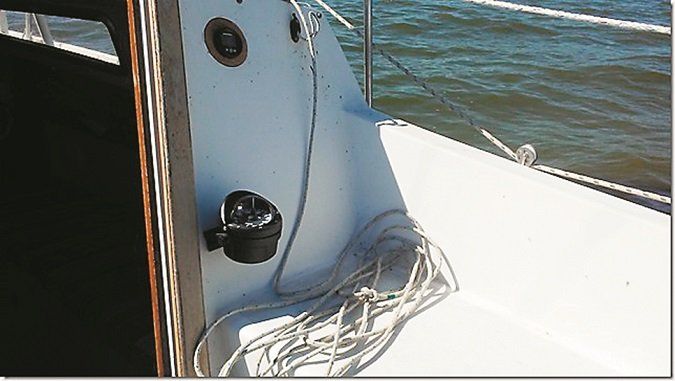
I wanted to say thank you for Ted Costello and Ritchie Navigations outstanding customer service. Inquiry was in regards to a sketchy warranty issue with their B-80 Voyager Compass. Call answered immediately by a friendly and knowledgeable staff member. Instead of resolving the matter with a repair kit which might not address the underlying problem, Ted simply sent a brand new compass. Item shipped no charge the next day with expedited delivery via USPS. This is an unusually high lever of commitment to maintaining Ritchie as the premier provider of marine compasses. Their B-80 Model features a 3-inch flat dial direct read at the back with 45-degree lubber lines. In my opinion, it makes an excellent unit for someone used to a binnacle-mounted compass but now sailing a tiller steered boat.
Jack Heaston
Bolter, Catalina 22
Upper Klamath Lake, Oregon
HUNTER OPINIONS
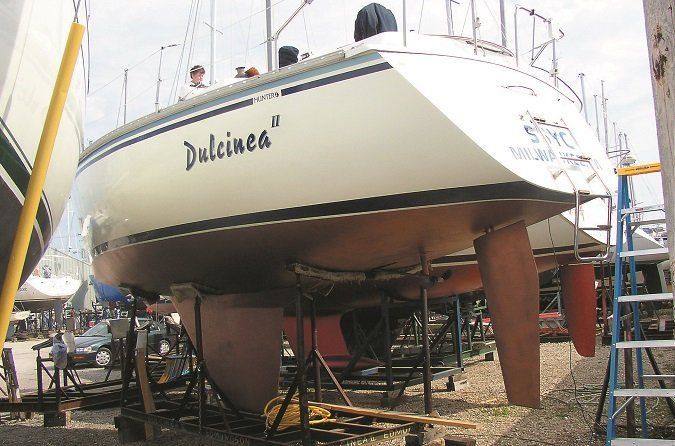
Your July 2019 response Mike Wrights letter regarding your Hunter 30 review (see PS June 2016) asked Hunter owners for their opinions. We bought a 1987 Hunter 31 in 1999. It had been well maintained and needed very little to make it cruise ready for the Great Lakes. It was born and raised on Lake Michigan and maintained by Pughs and then Racine RiversideMarine-in my opinion, the most competent marina on the lake.
We have averaged 40 days of sailing per summer since 2000 including a two-week cruise every August. We have put 550 hours on the Yanmar and several thousand on the sails. We usually buy one big upgrade a year at the Chicago Strictly Sail Show.
We have had no major problems and usually replace worn gear before it fails. We did replace the rotted compression post with an ironwood 4-by-4. I patch the Hunter/Catalina smile/crack on the front of the keel every other year but it does not seem to be a problem. We have had unsolicited offers to buy her but are not ready yet.
Rip Edmundson
Dulcinea II, Hunter 30
South Shore Yacht Club
Milwaukee, Wisconsin
INFLATABLE PFD PUNCTURES
Regarding your report on auto-inflating PFDs (see PS July 2019), Ive
always been concerned how vulnerable an inflatable PFD is to being torn and losing all ability to be inflated. Theres a myriad of sharp edges on a sailboat and especially in rough weather or going overboard, there are countless ways that this type of damage might occur rendering the PFD useless. Are there any documented cases of this type of incident occurring? Are there any current recommendations for non-inflatable PFDs that aren’t vulnerable to this type of damage? Certainly they’re going to be bulkier than inflatables, but they have an additional safety factor.
Allan Kirch
Via PS Online
Puncture is surely a risk, although were unfamiliar with any specific cases. More frequently, the leaksappear at the seams and are caused by age or neglect, which is why we advise testing for leaks at least once a season by leaving the PFD inflated overnight. Also check for recalls. In 2010, Spinlock recalled some of its vests due to concerns over the inflatable components.
ALTERNATIVE ENERGY
As an electrical engineer who specializes in renewable energy design and sailor, the hierarchy of alternative power for a sailboat should be: solar first, wind generation second, towing generators a distant third, fuel cells fourth. This assumes all four are viable options for your boat. Solar works regardless of whether the boat is moving or not and is the simplest by a wide margin.
Joseph Dimatteo
SV Triumph, Cabot 36,
Cruising in the Pacific
WHAT ABOUT MINI-SPLIT AC
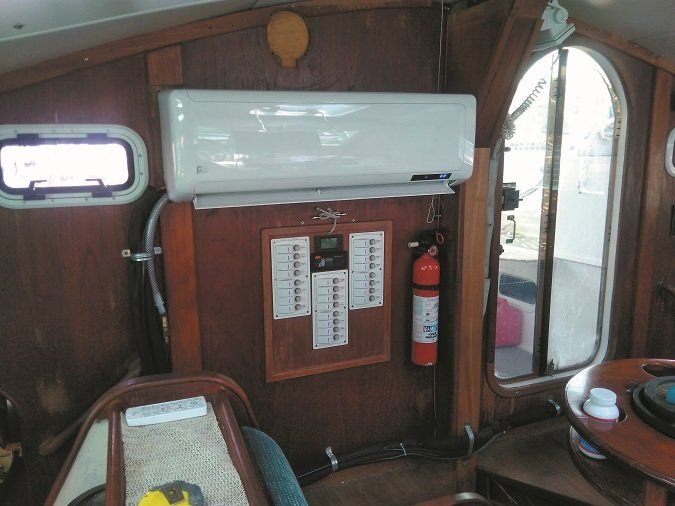
With regards to your recent report on air conditioning (see PS June 2018, and June 2019), I installed a 12,000 BTU Cool Air Mini-split system on my Prout 33 quest catamaran. The system works unbelievably well, drawing an average 3.5 amps at 208 volts AC, and a peak draw of 5.5 amps when under full load.
It will make me shiver in AC mode, even on the hottest days. It kept the boat at 80-degrees all winter long in Boston. Best of all, there are no through-hulls required. I don’t know why more people don’t do this. The unit cost was $800 on sale from HVAC-Direct (www.HVACdirect.com).
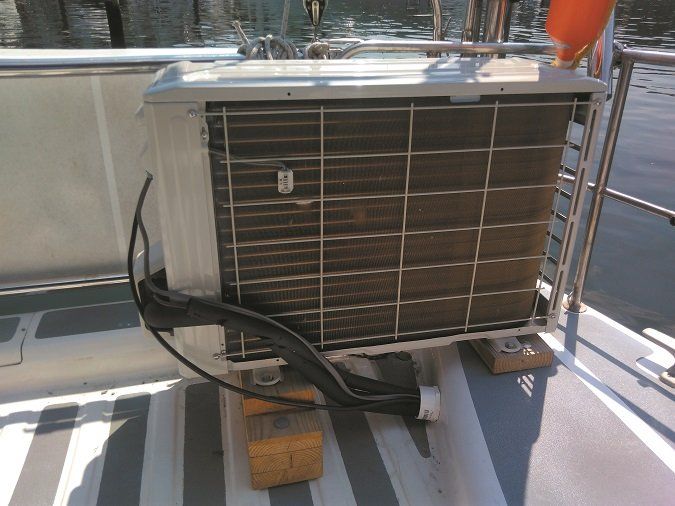
I did spend money on professional tools and did my own install. The unit is rated for full output down to -20 degrees F. To power it off the dock, I bought a 2kW Harbor Freight portable gas generator and a step-up transformer converting 110 volts AC to 220 volts AC power. This provides sufficient amps to run the unit and my boat battery charger
Jay Lowenstein
Deep Ellum, Prout 33
Boston, MA
WATERMAKER RELIABILITY IS KEY
With regard to your test of watermakers (see PS February 2012, DC Watermakers Go Head-to-head), warships, commercial fishing boats, and many patrol craft worldwide depend on watermakers, and they’ve proven very reliable. However, those built for the marine market are best viewed as disposables with limited lifespans. If the budget allows, two modest desalinators will work better than one more expensive unit. And bigger is certainly not better. Keeping membranes clean is always a major hassle. They’ll last a fairly long time if used regularly. Pickled and used watermakers should always be suspect.
Peter I. Berman
Author of Outfitting the Offshore Cruising Sailboat,
Norwalk, CT
CLARIFICATION
The Sea Dog hammock hook (part no. #671461) are designed for supporting fenders and other relatively light loads. A caption in the June 2019 report Sailboat Accessory Report suggested these hooks were suited for more rigorous work.
The August 2019 report on electric shock drowning (see PS August 2019, Preventing Electric Shock at the Dock) muddled the unplugging protocol. Turn off AC loads, the breaker on the boat, and then the breaker on the dock before unplugging.


































